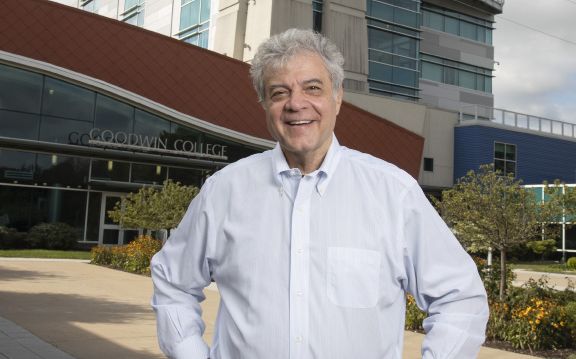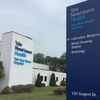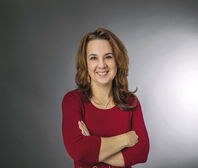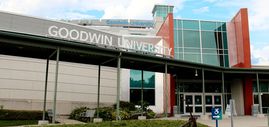Processing Your Payment
Please do not leave this page until complete. This can take a few moments.
-
News
-
Editions
-
- Lists
-
Viewpoints
-
HBJ Events
-
Event Info
- 2024 Economic Outlook Webinar Presented by: NBT Bank
- Best Places to Work in Connecticut 2024
- Top 25 Women In Business Awards 2024
- Connecticut's Family Business Awards 2024
- What's Your Story? A Small Business Giveaway 2024 Presented By: Torrington Savings Bank
- 40 Under Forty Awards 2024
- C-Suite and Lifetime Achievement Awards 2024
- Connecticut's Health Care Heroes Awards 2024
-
-
Business Calendar
-
Custom Content
- News
-
Editions
View Digital Editions
Biweekly Issues
- April 29, 2024
- April 15, 2024
- April 1, 2024
- March 18, 2024
- March 4, 2024
- February 19, 2024
- February 5, 2024
- January 22, 2024
- January 8, 2024
- + More
Special Editions
- Lists
- Viewpoints
-
HBJ Events
Event Info
- View all Events
- 2024 Economic Outlook Webinar Presented by: NBT Bank
- Best Places to Work in Connecticut 2024
- Top 25 Women In Business Awards 2024
- Connecticut's Family Business Awards 2024
- What's Your Story? A Small Business Giveaway 2024 Presented By: Torrington Savings Bank
- 40 Under Forty Awards 2024
- C-Suite and Lifetime Achievement Awards 2024
- Connecticut's Health Care Heroes Awards 2024
Award Honorees
- Business Calendar
- Custom Content
Goodwin University's Scheinberg makes big bet with $32M Univ. of Bridgeport purchase
 HBJ FILE PHOTO
Goodwin University President Mark Scheinberg said he’s got a plan to turnaround the financially-ailing University of Bridgeport.
HBJ FILE PHOTO
Goodwin University President Mark Scheinberg said he’s got a plan to turnaround the financially-ailing University of Bridgeport.
Mark Scheinberg is a risk taker.
Most entrepreneurs share that personality trait.
Scheinberg, who essentially built East Hartford-based Goodwin University from scratch, has emerged as an authority on adult education and workforce development in the state. He’s made several big moves recently including converting Goodwin College to Goodwin University in 2020 in an effort to raise the school’s profile.
His most recent big bet is leading Goodwin’s $32 million purchase of the financially-ailing University of Bridgeport, a rare M&A deal in Connecticut’s higher-education industry.
The University of Bridgeport had been a money-losing operation for the last few years, even before COVID-19 created financial challenges for most colleges as they were forced to temporarily close campuses, send students home and launch virtual operations, almost overnight.
In its most recently available financial disclosure, the University of Bridgeport posted an $8.8-million loss in fiscal 2019, while Goodwin posted a $3.2 million surplus, according to the National Center for Education Statistics.
Goodwin currently has an enrollment of 3,317 students vs. 4,100 at Bridgeport.
Scheinberg admits there is risk involved in the deal, but he’s got a turnaround plan that includes launching more career-based and part-time programs — something Goodwin is known for — at the University of Bridgeport, which has traditionally positioned itself as a liberal arts school.
Scheinberg said he expects Goodwin’s new acquisition to lose money in the first year, but turn profitable by year two. Both schools are not-for-profit higher-ed institutions.
Many people will be watching the deal including those with a financial stake in it. KeyBank and Liberty Bank helped finance the $32 million purchase of Bridgeport’s real estate and academic programs.
Meantime, state taxpayers also have a stake in the venture. The Department of Economic and Community Development will provide a $7.5 million low-interest loan, which will cover any first-year operating losses and help fund investment in the Bridgeport campus, said Scheinberg, who added Goodwin is matching that state investment.
Scheinberg recently sat down with Hartford Business Journal for a virtual interview about the deal and other new developments at Goodwin University. Here’s what he had to say.
Q: Why did you want to make the University of Bridgeport deal and what’s it mean for Goodwin University?
This is something that will be transformational for both schools.
University of Bridgeport is very much a STEM-based, career-based institution. They have doctorates in engineering and chiropractics and physician assistant programs. They have five doctoral programs and 23 master’s degrees with most of them in technological subjects.
Up until recently their engineering department was the largest in the state.
I think about them like Goodwin University would probably look like in 20 years if we stayed on task and really worked hard.
They have a lot of first-generation students.
Goodwin University has much more short-term programming, workforce programming, we do have some graduate programs, but this is another level for us entirely.
Goodwin is primarily a commuter school and so over the years we talked about whether we should open another spot somewhere. I liken us to a bank branch and you are only going to get a certain number of people to come to you within your geographic area. When we’ve done studies they’ve said we might want to look at the Bridgeport area.
We thought about putting a satellite branch down there but we decided to partner with the University of Bridgeport instead.
It was a smart deal but also a little risky in the middle of a pandemic. Everyone is running the other way and battening down.
We have approvals for East Hartford to be a branch of Bridgeport and vice versa. We are separate institutions, we each have our own strengths and each have our own brands. We have a platform to open up all our most important and successful programs in the Bridgeport area with a brand new student population. It’s a blue-ocean strategy.
As an example of the synergies, Goodwin sits across from Pratt & Whitney and all of the University of Bridgeport engineers are going to be enormously attractive to Pratt.
Q: How did the pandemic impact getting this deal to the finish line?
First of all, Goodwin University wasn’t really sidelined by the pandemic insofar as we have so much of our programming already designed to be done online. When the shutdown hit Connecticut last year we closed our campus on a Thursday and opened up virtually on Monday.
We did get hurt because you have some students who are unsure about coming to school in the middle of a pandemic, especially in fields like health care.
As an aside, Goodwin’s student retention rate went up 6 points last year.
Remember we have banking partners that had to lend to this deal. We asked them to do a couple of difficult things.
Here’s an institution that has lost a lot of money in the last few years and if we can’t staunch that loss, it’s going to drain us, at least that’s what the banks are thinking in their minds.
But more importantly higher education is not the place you want to invest in during the middle of a pandemic. So we had to have a very solid business plan to meet their underwriting standards. We had to have a really good sense of how this whole thing turns around and we’ve done that.
We know that the number of graduate students at the University of Bridgeport is already more than it was last year.
On the undergrad level we took a dip, largely because of the uncertainty around the school’s future. Before we came in there was uncertainty about whether they were going to survive. We did lose some students but we are hoping to get them back pretty quick, maybe not all by the fall.
In our business plan that might mean we take a loss over the course of the first year and we’ll be back in the black by year two.
Q: So, what is the business plan to make this work? How do you turn around Bridgeport?
This is a school that is head and shoulders above most in the state when it comes to STEM subjects, engineering and education and yet their previous plan was to think of themselves more as a liberal arts school.
From business terms, if you go to a liberal arts school you are commoditizing yourself. There are a lot of good liberal arts schools in this part of the planet and so they are not going to compete head-to-head with Sacred Heart or Fairfield University, so what you end up doing is you try to pivot to something that you are not going to be the best at.
As a result you have to create incentives for people to come there, which means you must discount tuition. And so the plan they were doing wasn’t very good.
We are pivoting back very strongly into their pre-professional, more technical areas and not wasting as much energy to maintain liberal arts majors.
In fact, they had majors in art and music, which does not fit our mission, and so those subjects we actually partnered with Paier College of Art and they’ve picked up that building and those programs.
There will be other colleges that I believe will step in and think about programming on the Bridgeport campus.
Q: How is the business going to change?
We are going to focus better on what the product is, focus better on admitting students and finding more of them. We are good at that at Goodwin. We are very cutting edge when it comes to our marketing and admissions processes.
We actually cut out a lot of legacy expenses at Bridgeport. You had a lot of departments with budgets for things they hadn’t bought in years but they were still spending the money.
Over the last few years they had financial difficulties and the cutting they did wasn’t very strategic. It was emergency cuts, and they were chopping out people.
We are able to stop and be more deliberate. In the process, we’ve kept 90% of the staff who wanted to come over. But we’ve also changed our expectations of them.
A professor at a normal school teaches three or four classes a semester in two semesters. We run three semesters and the University of Bridgeport has now switched to a three-semester system. If you look at someone teaching four classes you already increased their output by 50% when you have three semesters vs. two. That alone changes the expense model.
Q: What’s the market potential in the Bridgeport area?
The University of Bridgeport is give or take 4,100 students. Bridgeport in its heyday had 10,000 students so this is a school that is much smaller for a lot of good reasons, but our aim is to get enrollment to 4,500 to 5,000 within a year.
Bridgeport also has a history of attracting international students. There are hundreds of students in its engineering program that come in from India, China and Saudi Arabia because it’s a world-renowned program.
When President Trump came into office he made the country less attractive to foreign students and so many rerouted and went elsewhere, then COVID made it even harder to go to U.S. universities, so Bridgeport lost a huge part of its international student population, which we believe is going to thunder back. There are hundreds of international students in the admissions pipeline.
We also plan to grow our student population with the introduction of part-time programs. Most of Goodwin’s students are all part time. In Bridgeport most students are traditional, full-time students, but that pie is shrinking.
Being able to offer the part-time, adult market will be a brand new avenue in Bridgeport.
Q: How do you measure the success of this deal?
The first marker is we have to be running in the black. This can’t be a charity case of another charity. My board will be upset if this drains us in any way.
In the first year we have expectations that we can’t make up all the lost ground. We need a full business cycle to really come home so by the fall of 2022 Bridgeport will be humming.
There is deferred maintenance that has to be done at the Bridgeport campus, there’s new programs that have been on the drawing board but no one has been able to pull the trigger. The impact that we will be able to have down there will be impressive.
Q: Why did the Department of Economic and Community Development get involved in this deal?
They were involved because if the University of Bridgeport failed, the repercussions would be enormous. If the place closes, because of the uniqueness of some of its programs, there would be no other place to go in the state.
Getting DECD involved gave more comfort to my board that there were more resources to put into the deal so we didn’t deplete ourselves and it also gave comfort to our banks.
It helped to cement the deal. I don’t think this deal could have been done without the state.
Related Content

2022 Giving Guide
This special edition informs and connects businesses with nonprofit organizations that are aligned with what they care about. Each nonprofit profile provides a crisp snapshot of the organization’s mission, goals, area of service, giving and volunteer opportunities and board leadership.
Learn more
Subscribe
Hartford Business Journal provides the top coverage of news, trends, data, politics and personalities of the area’s business community. Get the news and information you need from the award-winning writers at HBJ. Don’t miss out - subscribe today.
Subscribe
2024 Book of Lists
Delivering Vital Marketplace Content and Context to Senior Decision Makers Throughout Greater Hartford and the State ... All Year Long!
Read Here-
2022 Giving Guide
This special edition informs and connects businesses with nonprofit organizations that are aligned with what they care about. Each nonprofit profile provides a crisp snapshot of the organization’s mission, goals, area of service, giving and volunteer opportunities and board leadership.
-
Subscribe
Hartford Business Journal provides the top coverage of news, trends, data, politics and personalities of the area’s business community. Get the news and information you need from the award-winning writers at HBJ. Don’t miss out - subscribe today.
-
2024 Book of Lists
Delivering Vital Marketplace Content and Context to Senior Decision Makers Throughout Greater Hartford and the State ... All Year Long!
ABOUT
ADVERTISE
NEW ENGLAND BUSINESS MEDIA SITES
No articles left
Get access now
In order to use this feature, we need some information from you. You can also login or register for a free account.
By clicking submit you are agreeing to our cookie usage and Privacy Policy
Already have an account? Login
Already have an account? Login
Want to create an account? Register
Get access now
In order to use this feature, we need some information from you. You can also login or register for a free account.
By clicking submit you are agreeing to our cookie usage and Privacy Policy
Already have an account? Login
Already have an account? Login
Want to create an account? Register









0 Comments